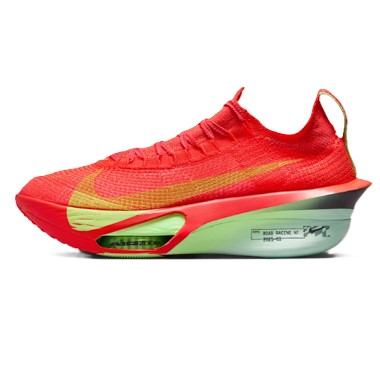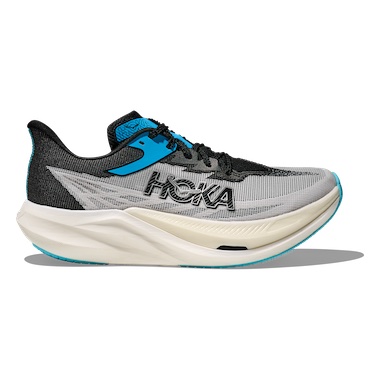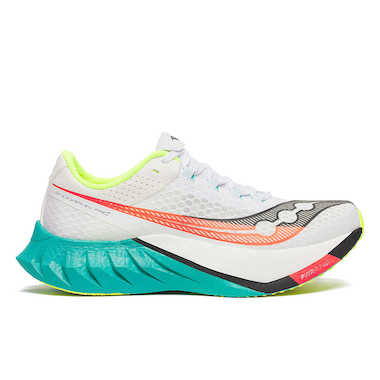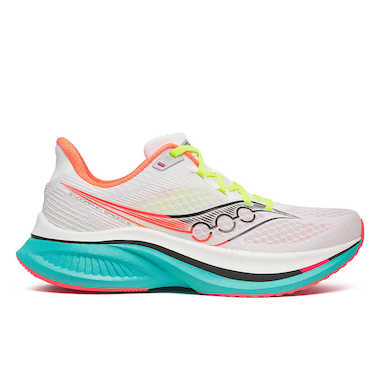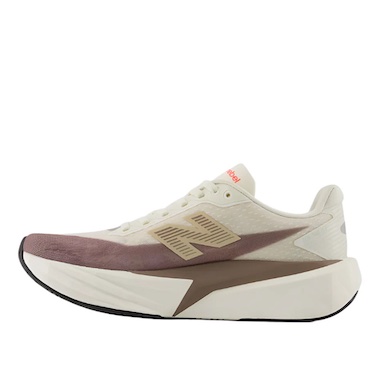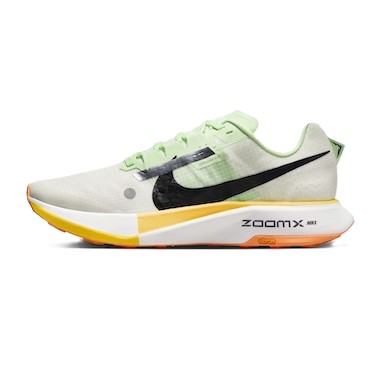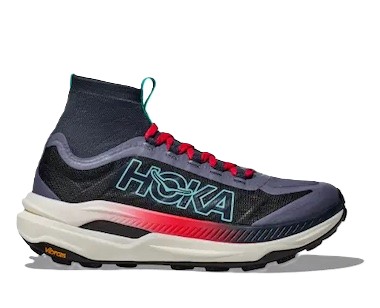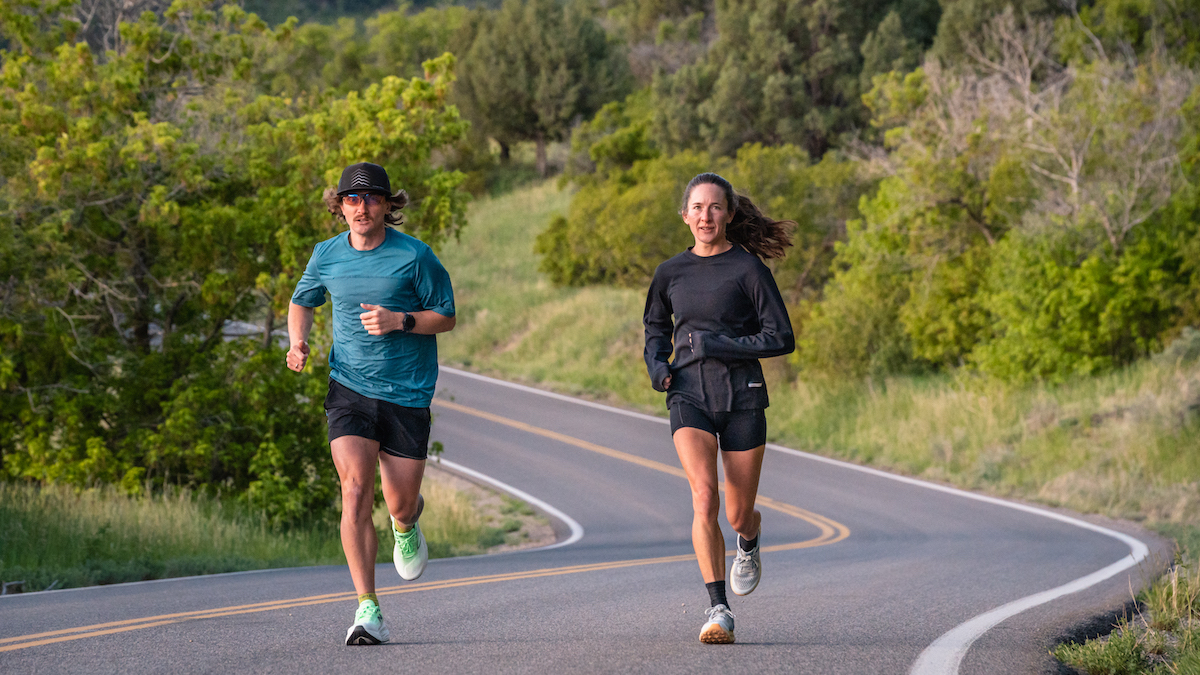
Finding the best training and racing shoes for a marathon is highly important. Photo: iRunFar/Eszter Horanyi
The marathon is a distance that attracts almost every type of runner, from newbies aiming to run farther than ever to those chasing Boston qualifiers or elites going for the Olympic dream. It makes a worthy goal for anyone, and having the best marathon shoes for race day can significantly affect your performance. While you certainly don’t need special shoes for running a marathon, if you’re attempting to run at your absolute best, your shoes can make a big difference.
To help you, we rounded up the best marathon running shoes and sent them to five of our regular shoe testers who were all training for marathons. They took them to the track for weekly speed workouts, to paved and gravel roads for long runs, and eventually, to city streets on race day. After hundreds of miles logged, we named the Nike Alphafly 3 our favorite overall shoe for marathon running. We also loved the Saucony Endorphin Speed 5 for race day and everyday training, and we turned to the Nike Ultrafly for trail marathons.
If you’re looking for a more specific type of shoe for training, be sure to head to our Best Cushioned Road Running Shoes, Best Stability Road Running Shoes, Best Running Shoes Guide, or our Best Road Running Shoes guides.
To learn more about finding the right marathon running shoe for you, scroll down to our recommendations for how to choose, as well as our frequently asked questions. Finally, learn more about our research and testing methodology.
Best Marathon Running Shoes
- Best Overall Marathon Shoe: Nike Alphafly 3
- Best Overall Marathon Shoe — Runner-Up: Hoka Rocket X 3 and Saucony Endorphin Pro 4
- Best Marathon Shoe for Beginners: Nike Pegasus 41
- Best Marathon Shoe for Training: Saucony Endorphin Speed 5
- Best Value Marathon Shoe: New Balance FuelCell Rebel v5
- Best Trail Marathon Shoe: Nike Ultrafly
- Best Trail Marathon Shoes — Runner-Up: Hoka Tecton X 3
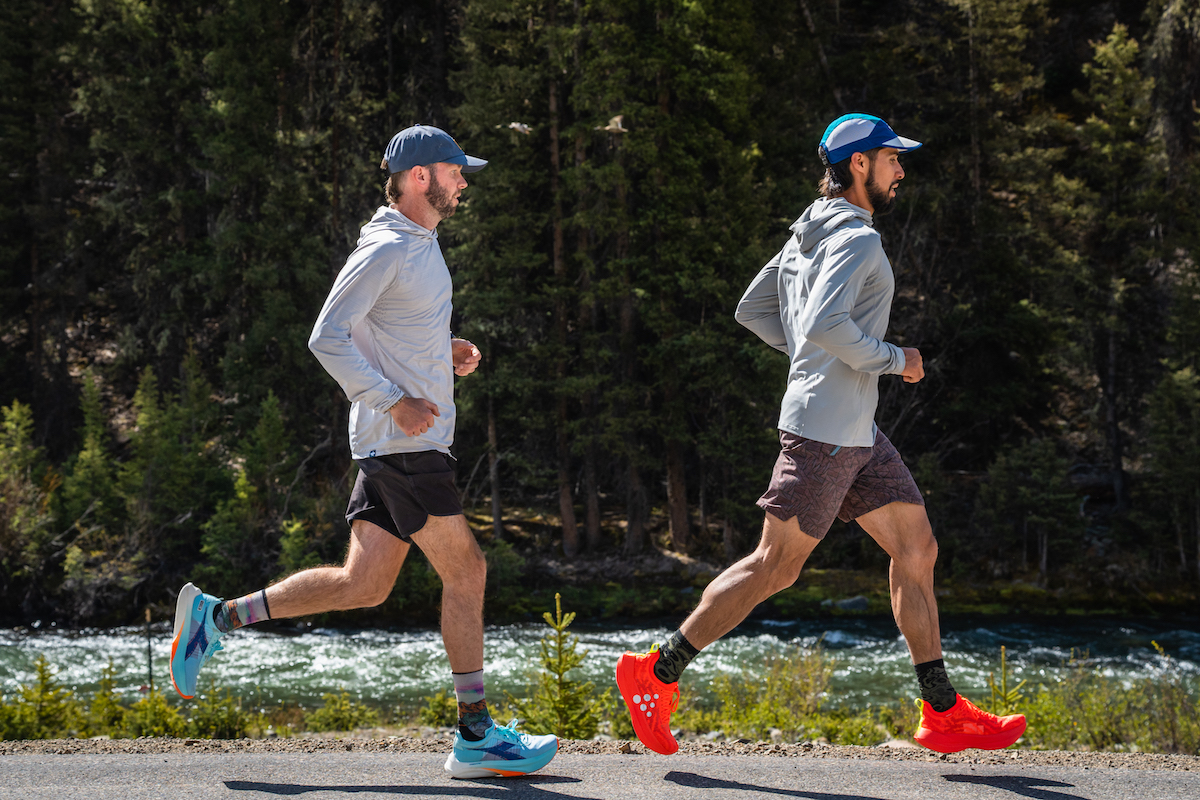
Testing marathon shoes near Silverton, Colorado. Photo: iRunFar/Eszter Horanyi
Best Overall Marathon Shoe: Nike Alphafly 3 ($285)
- Bouncy
- Fast
- Stable
Cons:
- Very expensive
- Not an everyday running shoe
If you’re chasing a personal best or any qualifying standard, the Nike Alphafly 3 is the shoe that will give you every performance edge on race day. Nike was the first running brand to introduce a super shoe with the Vaporfly in 2016. Nike’s Alphafly launched in 2020; the second iteration was in 2022. The third — and latest — was released in April 2024. Compared to the Vaporfly, the Alphafly has more cushion and stability, making it ideal for longer distances like the road marathon.
This shoe features two Nike Zoom Air pods in the forefoot to smooth the heel-to-toe transition and provide a feeling of forward propulsion as you push off your toes. Nike changed a few things about the latest version of this shoe. First, at 7.6 ounces, it’s gotten lighter, which we obviously dig. A wider carbon plate adds stability to the shoe, and Nike changed the upper to its AtomKnit material, which has better breathability compared to previous versions. All this adds up to the best overall marathon shoe we tested, as it’s fast, responsive, and lightens the load on the legs over 26.2 miles.
Our testers felt like they could launch into space in these shoes — they immediately noticed the bounce that this shoe provides. Yet, for all that bounce and cushion, this shoe feels stable. The ZoomX cushion felt soft yet springy — never mushy — making workouts and tempo runs feel fast and effortless. The only real downside of this shoe is that it is among the most expensive running shoes currently available and will not withstand as many miles as the typical running shoe. As a result, we recommend using it as a specialized shoe for workouts and races. If you are new to running or aren’t training for a marathon time goal, it doesn’t make much sense to invest in this one.
[Editor’s Note: The Nike Vaporfly 3 is another popular super shoe that scored well in testing. However, it was edged out in overall ratings and thus excluded from this guide. Compared to the Alphafly 3, the Vaporfly is slightly lighter and better suited to shorter distances in addition to the marathon.]
Claimed Weight (U.S. men’s 10): 7.6 ounces (215 grams) | Drop: 8 millimeters | Construction: Carbon fiber plate, two Nike Zoom Air pods, Nike ZoomX foam
Shop the Men's Nike Alphafly 3Shop the Women's Nike Alphafly 3

The Nike Alphafly 3 is our favorite marathon racing shoe for the roads. Photo: iRunFar/Eszter Horanyi
Best Overall Marathon Shoe — Runner-Up: Hoka Rocket X 3 ($250)
- Very responsive
- Durable (for a super shoe)
- More versatile than Nike Alphafly
Cons:
- Wasted on slow, easy runs
The Hoka Rocket X 3 is probably the most accessible super shoe we’ve run in. Most super shoes — like the Nike Alphafly 3 above, for example — will put you in a more aggressive stance and stride. It’s tough to run anything but a fast pace in them. They can also lack stability. The Hoka Rocket X 3 is much better at providing that stability, even at slower paces, which is why we like this shoe for folks entering the super shoe world.
Starting at the bottom of the shoe, Hoka updated this version of the Rocket with a more sticky rubber outsole, helping create some confidence on wet pavement. Our main tester recently ran in these for a local 5k that had some unexpected gravel sections. While he did slow his pace some on the gravel road and a sharp turn back onto the pavement, these shoes provided more traction and confidence than many other similar super shoes would have. Moving up the shoe is the carbon plate, which Hoka added winglets to for boosted stability. We’re not sure if it’s the addition of the winglets or the shoe’s overall construction, but in terms of high-stacked super shoes, the Rocket X 3 is one of the most stable we’ve tested. Hoka combines the full-length carbon plate with its dual-density PEBA foam to create solid efficiency, propulsion, and energy return.
Hoka replaced the previous version’s synthetic mesh upper with a single-layer engineered mesh material. We like the change as we think it improves breathability and comfort compared to the X 2. Hoka did remove the tongue gussets on this version, but we had zero issues with the tongue moving around. The unique structure and material of the laces provide a lock-down feel.
Overall, the shoe is super solid and a good intro into the super shoe world.
Actual Weight (U.S. men’s 9): 8 ounces (227 grams) | Drop: 7 millimeters | Construction: Carbon fiber plate with winglets and PEBA foam midsole
Shop the Hoka Rocket X 3Best Overall Marathon Shoe — Runner-Up: Saucony Endorphin Pro 4 ($240)
- Excellent for non-elite runners
- Light, fast, and offer more stability
Cons:
- Not the fastest super shoe available
The Saucony Endorphin Pro 4 is a more accessible carbon-plated super shoe, especially compared to the Saucony Endorphin Elite 2. As our primary tester put it, “They are great for normal people.” She also said the price tag and overly aggressive rocker of the Endorphin Elite 2 make it a bit too much for her and most of her training buddies who are all pursuing road marathon times of around three hours.
As the price suggests, at $50 less than the Endorphin Elite 2, the Endorphin Pro 4 is Saucony’s entry-level carbon-plated shoe. But don’t let that dissuade you from the shoe. Another friend of the site who is quite experienced almost went sub-15 in a road 5k in them. They are light, efficient, propulsive, and teched-out road racing shoes. The coolest and most unique aspect about these shoes is that Saucony fuses its PWRRUN PB and PWRRUN HG midsole foams together, creating a feel that is responsive, smooth, and springy. The shoe also features a full-length carbon plate and Saucony’s SPEEDROLL technology, boosting the shoe’s efficiency and energy return.
The upper portion of the shoe is comfortable and locks down well to provide support and comfort at faster speeds and longer distances. It features engineered mesh that is light and breathable. The bottom has some strategically placed rubber pieces at the forefoot and heel that add a bit more traction.
Actual Weight (U.S. men’s 9): 7.5 ounces (212 grams) | Drop: 8 millimeters | Construction: PWRRUN PB and PWRRUN HG midsole foams fused together, full-length carbon plate
Shop the Men's Saucony Endorphin Pro 4Shop the Women's Saucony Endorphin Pro 4
Best Marathon Shoe for Beginners: Nike Pegasus 41 ($140)
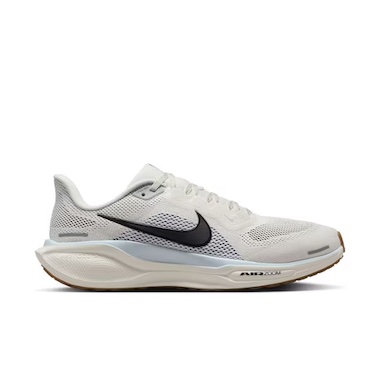 Pros:
Pros:
- Versatile
- Comfortable
- Excellent durability and value
Cons:
- Not the lightest shoe
The Nike Pegasus 41 is one of our favorite all-around running shoes. Why? It’s incredibly versatile. Arguably Nike’s most famous running shoe, the origins go back more than four decades. Nike continued to make changes and improvements to the shoe, and now it’s one of our favorite shoes available. We chose it as our best marathon running shoe for beginners because of how approachable it is. First, at $140, the cost is about as good as you can get for a high-quality running shoe these days. Next, the neutral support and moderate stack height make it work for a wide variety of foot types and runners.
Starting at the top of the shoe, Nike employs an engineered mesh that we found comfortable and breathable enough. We’ve had the opportunity to test multiple pairs throughout an entire year and can attest that it has good temperature regulation. The fit is standard, and these shoes were comfortable out of the box. We didn’t have any issues with blisters or hot spots. The midsole is made of Nike’s ReactX foam, an upgrade on the React foam of previous versions. We found it highly responsive, and it makes the shoe good for long runs and tempo workouts. Lastly, the outsole is Nike’s traditional waffle-inspired pattern and is incredibly grippy for a traditional road shoe. One of our testers does daily runs on multiple surfaces, including dirt, crushed rock, gravel, and pavement, in these shoes and finds that they transition between each surface seamlessly.
The Pegasus is simply a solid shoe. It’s a workhorse, capable of the ultra-marathon distances. iRunFar’s founder and former Editor-in-Chief, Bryon Powell, used them during his win at the Ultra Gobi Ultramarathon in 2024.
The last point we’ll make about these shoes is that when purchased in a good colorway, they look good enough to wear in some casual settings. If we’re limited on packing space for flights, we’ll take these as our only shoes since they can serve multiple purposes. We highly recommend them for the marathon newbie or as a trainer for the intermediate and advanced marathoner.
To learn more about the shoe, check out our full Nike Pegasus 41 review.
Actual Weight (U.S. men’s 9): 9.9 ounces (281grams) | Drop: 10 millimeters | Construction: Engineered mesh upper, ReactX midsole foam, waffle-inspired rubber outsole
Shop the Women's Nike Pegasus 41Shop the Men's Nike Pegasus 41

The Nike Pegasus 41 is a highly versatile running shoe at a good cost. Photo: iRunFar/Nathan Allen
Best Marathon Running Shoe for Training: Saucony Endorphin Speed 5 ($175)
- Cushioned yet responsive
- Comfortable
- More versatile than a super shoe
- Good value
Cons:
- The long-term effects of everyday running in carbon-plated shoes are unknown
- Limited durability
Saucony designed the Saucony Endorphin Speed 5 as a race day and speedwork shoe, but our primary tester also often used it for daily miles. The shoe’s versatility starts at the bottom, where Saucony updated the outsole to have greater coverage. This improved both the durability and versatility, allowing us to run on more surfaces than just pavement. Moving up the shoe, Saucony sandwiches a semi-rigid nylon plate between two layers of PWRRUN PB midsole foam. This midsole construction is where the shoe really shines. It creates an efficient and propulsive ride. It’s also an excellent option for anyone who is carbon plate-curious. Not many shoes offer nylon plates, which is a good in-between of a shoe without a plate and the carbon-plated super shoes.
Lastly, Saucony updated the upper portion of the shoe to a lightweight engineered mesh. We thought the updated mesh helped improve both the comfort and breathability compared to the previous version of the shoe. The Saucony Endorphin Speed 5 can work as your stand-alone marathon shoe, and will also work as a daily trainer, a speedwork and up-tempo shoe, and a racing shoe. At 8.3 ounces, it’s almost as light as many marathon racing shoes. With a heel stack height of 36 millimeters and forefoot stack height of 28 millimeters, it’s not overly cushioned. This is a fast shoe that’s much more accessible than shoes like the Nike Alphafly or even the Hoka Rocket X 3.
Claimed Weight (U.S. men’s 9): 8.3 ounces (237 grams) | Drop: 8 millimeters | Construction: Winged nylon plate between two layers of PWRRUN PB midsole foam
Shop the Men's Saucony Endorphin Speed 5Title
Best Value Marathon Running Shoe: New Balance FuelCell Rebel v5 ($140)
- Lightweight and bouncy
- More versatile than a super shoe
- Great value
Cons:
- Lacks the responsiveness of a carbon-plated shoe
- Slippery on gravel roads and trails
- Squishy cushion feels less stable than shoes with a larger platform
The newest in a line of well-loved shoes, the New Balance FuelCell Rebel v5 improves on the previous version and stays a budget-friendly option. Unlike other options in this guide, it doesn’t have a carbon plate, but the latest version shaves a few grams off the old one while claiming the same 30-millimeter stack height at the heel. The platform remains wide, and the shoe’s volume seems to be creeping up with each version while still providing a snug fit. The no-sew upper construction helps prevent hot spots and gives the shoe a sleek look.
The FuelCell Rebel is an ultralight racing shoe for those who prefer a lower stack height and a closer-to-the-ground feel. Although the shoe lacks a carbon plate, the FuelCell foam provides plenty of bounce and energy return — the only downside is a slight tradeoff in stability. This was not an issue for our testers at the marathon distance.
The shoe’s engineered mesh upper and thin tongue provide enough structure to hug and support the foot while keeping it light and breathable. This shoe is an excellent choice for daily running, workouts, and racing — especially for newer runners, first-time marathoners, and anyone not keen to invest hundreds of dollars in a super shoe.
Claimed Weight (U.S. men’s 9): 7.5 ounces (212 grams) | Drop: 6 millimeters | Construction: New Balance’s FuelCell foam

The New Balance FuelCell Rebel v5 is such a good shoe, and at a relatively affordable cost. Photo: iRunFar/Eszter Horanyi
Shop the Women's New Balance FuelCell Rebel v5Shop the Men's New Balance FuelCell Rebel v5
Best Trail Marathon Running Shoe: Nike Ultrafly ($260)
Pros:
- Fast and comfortable racing shoe for the trails
- Good enough grip
- Seems to have good durability
Cons:
- Expensive
If you’re looking for the best trail racing shoe for up to a marathon, look no further than the Nike Ultrafly. Nike took what it perfected in the Alphafly and Vaporfly road racing super shoes and applied it to its trail running line to create the Ultrafly. iRunFar put the Ultrafly through the ringer with multiple testers for over a year, and our verdict is this is the best trail racing shoe currently on the market despite its steep price tag. Nike employs a Vibram Megagrip with Litebase outsole to provide traction while saving weight, and chevron-patterned lugs dig into the ground. We found it solidly grippy on both climbs and descents and on dry and wet terrain.
Moving up the shoe, Nike implements its Flyplate, a carbon plate sandwiched between two layers of its ZoomX foam. We found it to be a smooth, propulsive, and fun ride. Lastly, Nike uses its VaporWeave mesh on the upper, which we found to be very durable and comfortable.
The elephant in the room for this particular show is its price tag. It’s a lot. But considering the shoe’s performance, comfort, and durability, we still recommend it as the best trail marathon racing shoe currently available if speed is your focus.
For more details, check out our entire Nike Ultrafly review.
Actual Weight (U.S. men’s 10): 10.6 ounces (300 grams) | Drop: 8.5 millimeters | Construction: Vibram Megagrip and Litebase, Flyplate carbon plate, ZoomX foam, Vaporweave mesh upper
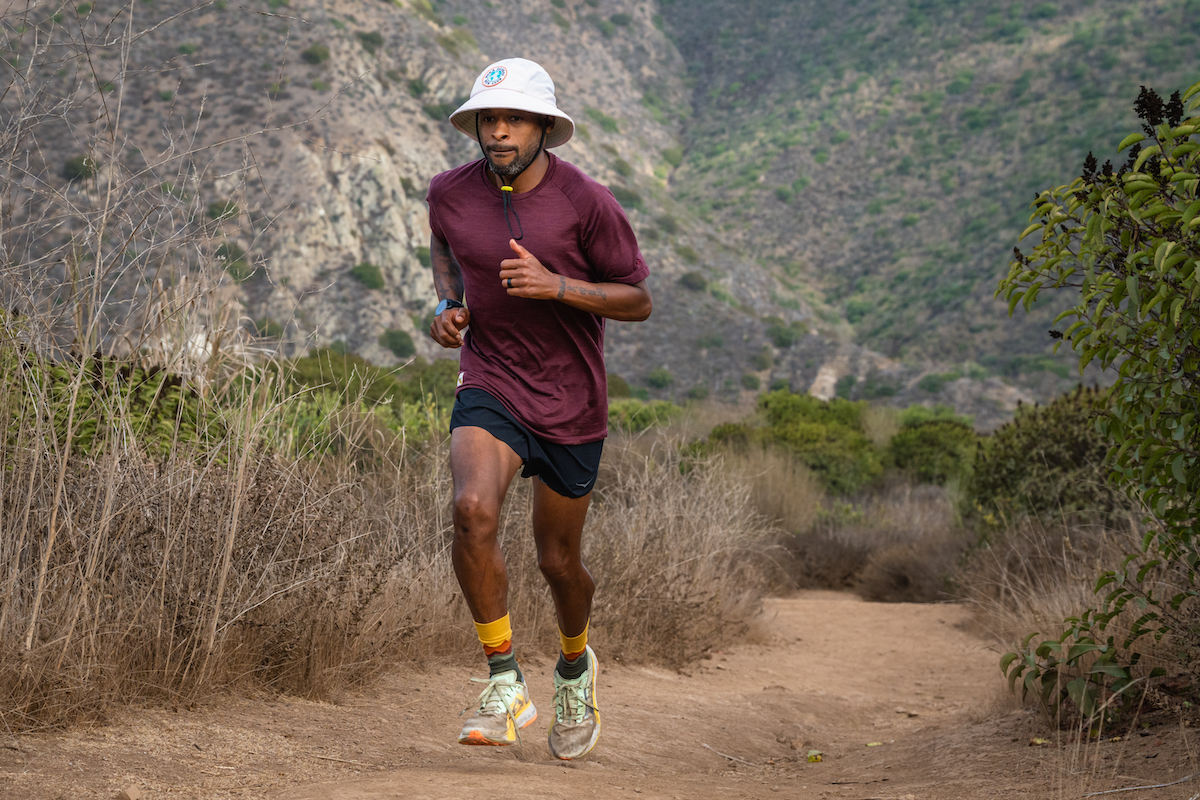
Testing the Nike Ultrafly trail running shoes in California’s Santa Monica Mountains. Photo: iRunFar/Eszter Horanyi
Shop the Women's Nike UltraflyShop the Men's Nike Ultrafly
Best Trail Marathon Running Shoe — Runner-Up: Hoka Tecton X 3 ($275)
Pros:
- Smooth ride
- Lightweight and responsive
- Comfortable cushion
Cons:
- Expensive
- Some might not like the built-in gaiter
It’s easy to scratch our heads at the new Hoka Tection X 3, and we have to admit, we have mixed feelings about this shoe. For one, Hoka took an already expensive shoe ($225) and upped its cost by another $50 to $275. Then, it took our favorite trail racing shoe ever created and slapped a built-in gaiter on it, possibly due to influence from the brand’s star athlete, Jim Walmsley. While some people like the gaiter, and it isn’t as annoying as we expected it to be, it’s still not our favorite change to the shoe. That said, it’s still a comfortable, fast, and high-performing shoe. Instead of removing it entirely from this guide, we moved the Nike Ultrafly above it, which we believe is truly the better of the two shoes.
Even with the gaiter, the shoe, which originally debuted in 2022 and got its first update in early spring of 2023, is still a top-shelf shoe. While it’s not the lightest trail racing shoe, it does many things well — including providing cushion, grip, and comfort — making it an excellent option for the marathon distance on smooth and fast trails.
While polarizing in many ways, this shoe has been overwhelmingly popular among iRunFar’s gear testers, and it’s included in both the Lightweight Trail Running Shoes and the Cushioned Trail Running Shoes guides.
We really love the lacing system and the upper of this shoe. It provides lock-down cinching, which is key to moving fast on uneven and technical terrain. Hoka’s Profly X midsole foam offers a nice balance of cushion and rebound, and the two carbon plates, along with a slightly rockered profile under the forefoot, help propel you forward. Finally, the Vibram Megagrip with Litebase outsole provides reliable grip over steep terrain and loose rocks without feeling too stiff or clunky.
Actual Weight (U.S. men’s 9): 10 ounces (283 grams) | Drop: 5 millimeters | Construction: ProFly X midsole foam, two independent carbon plates with winglets, Vibram Megagrip Litebase outsole
Shop the Men's Hoka Tecton X 3Shop the Women's Hoka Tecton X 3

The Hoka Tecton X 3 are performance shoes ready to go fast. Photo: iRunFar/Eszter Horanyi
Comparing the Best Marathon Shoes
| SHOE | PRICE | WEIGHT | DROP |
| Nike Alphafly 3 | $285 | 7.6 ounces | 8 millimeters |
| Hoka Rocket X 3 | $250 | 8.0 ounces | 7 millimeters |
| Saucony Endorphin Pro 4 | $240 | 7.5 ounces | 8 millimeters |
| Nike Pegasus 41 | $140 | 9.9 ounces | 10 millimeters |
| Saucony Endorphin Speed 5 | $175 | 8.3 ounces | 8 millimeters |
| New Balance FuelCell Rebel v5 | $140 | 7.5 ounces | 6 millimeters |
| Nike Ultrafly | $260 | 10.6 ounces | 8.5 millimeters |
| Hoka Tection X 3 |
$275 | 10.0 ounces | 5 millimeters |
Glossary
- Super Shoe – A specialized running shoe built with a carbon fiber plate sandwiched between two layers of foam. In addition to being highly cushioned, a super shoe will compress and rebound like a spring.
- Stack Height – The amount of shoe material between the foot and the ground, generally measured in millimeters. A higher stack height generally means more cushion.
- Heel-to-Toe Drop – Also called offset or drop, it is the stack height difference, measured in millimeters, between a shoe’s heel and forefoot.
- Outsole – The exposed material on the bottom of a shoe that makes contact with the ground.
- Upper – The top of the shoe, including the entirety of the shoe above the sole.
- Midsole – Layer(s) of foam connecting a shoe’s upper to the shoe’s outsole.
- Toebox – The front area of the shoe surrounding the ball of the foot and toes.

Keith Kilgore Jr. tests the Nike Alphafly 3 shoes in Ventura County, California. Photo: iRunFar/Eszter Horanyi
How to Choose the Best Marathon Shoe
Super Shoes Versus Traditional Running Shoes
All traditional shoes have the same general build, including the upper, midsole, and outsole. This type of shoe can include a wide variety of midsole stack heights and amounts of cushion, outsole designs, and other technologies. However, the key with traditional, non-plated shoes is that the midsole cushion functions to absorb shock.
The midsole on super shoes, on the other hand, acts more like a spring. Although placing springs inside shoes is technically illegal in racing situations, the cushion-plate-cushion design of a super shoe has the same effect as a spring while staying within the bounds of the rules. The carbon fiber plate between two layers of foam creates a rebounding effect that leads to forward propulsion rather than simply absorbing impact.
Super shoes can give runners an advantage in workouts and races, but they also change your natural gait and are not recommended for everyday running. Additionally, all the fancy technology means that super shoes are very expensive, typically ranging from $200 to $300. On top of this, they don’t last as long as traditional running shoes.
The common question is: Are super shoes effective? The answer is yes. This has been proven since super shoes first appeared at the 2016 Olympics. However, whether super shoes are the best marathon shoes for you is a more complex topic. The short answer is that super shoes can help you achieve new bests if you have an efficient gait. If you have instabilities or inefficiencies, super shoes can lead to injuries. For a deep dive into super shoes, check out this video from author and running expert Jay Dicharry, MPT, SCS, who has worked with dozens of Olympians and elite athletes.
The bottom line is that if you invest in super shoes for a specific race, you’ll also need at least one other pair of traditional running shoes for everyday training. Because super shoes will change how you run, you’ll want to gradually adapt to running in them to reduce the risk of getting hurt. Our testers rated the Nike Alphafly 3 as their favorite super shoe and the New Balance FuelCell Rebel v5 as their favorite traditional running shoe for the marathon distance.
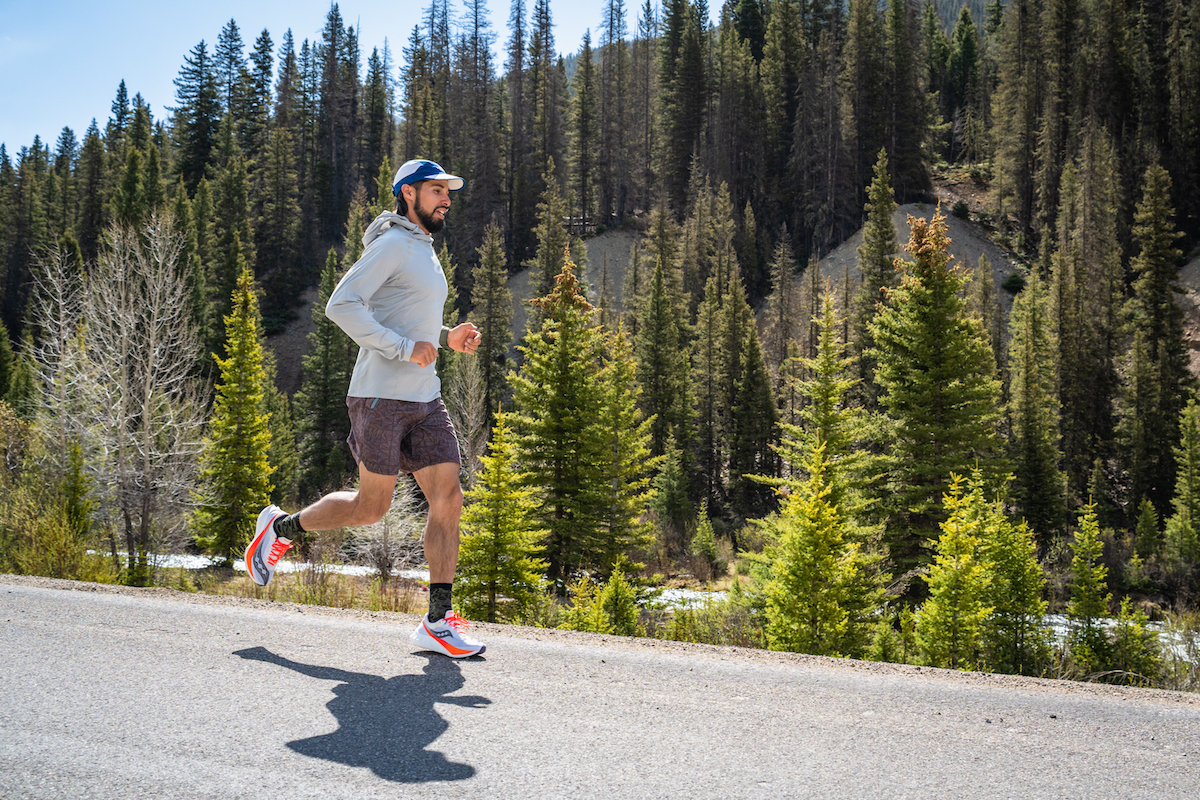
The Saucony Endorphin Pro 4s are good racing shoes for anyone looking to try out super shoes. Photo: iRunFar/Eszter Horanyi
Comfort
Whether your goal is simply to cross the finish line or to run a personal best, a comfortable shoe will set you up for success. While some discomfort is normal in a race effort, blisters or foot pain can negatively impact your performance by forcing you to change your gait to manage pain. Super shoes feel significantly different from traditional shoes, and you’ll need some time to get used to them before they’re likely to feel comfortable. The Saucony Endorphin Pro 4 isn’t as aggressive in its build as other super shoes and is a great option if you’re just getting into the super-shoe world.
These issues can also have a negative psychological effect. It’s hard to stay optimistic, focus on your pacing and fueling, and push through the usual muscle pain if you’re distracted by uncomfortable shoes. Finally, uncomfortable shoes can also lengthen your recovery time if you’re sidelined post-race by foot pain, blisters, or damaged toes. Our testers found that the Nike Pegasus 41 was a comfortable shoe right out of the box and able to stand up to long miles in both training and racing.
What’s comfortable to an individual runner is a matter of personal preference. Some runners like a minimalist racing-flat type of shoe, while others want as much cushion as possible between their feet and the asphalt. Runners who overpronate will want more support, and many neutral runners with an efficient gait thrive in super shoes. If you’re an overpronator, where your foot collapses to the inside more than normal, you might want to take a look at our Best Stability Running Shoes guide. Ultimately, the key with any race-day shoes is to wear them enough during training that you know they’ll feel good through 26 miles.

Our two favorite marathon road racing shoes, the Hoka Rocket X 2 (left) and Nike Alphafly 3 (right) have excellent cushioning and responsiveness. Photo: iRunFar/Eszter Horanyi
Cushioning
As with comfort, individual runners will prefer different types and amounts of cushioning — that’s why there are so many styles of running shoes available, and the best marathon shoe isn’t going to be the same for everyone! Regarding cushioning, there’s more to consider than just the stack height under your feet. The foam density of the midsole will also influence how a shoe feels.
Soft foam feels plush, like clouds under your feet, which is incredibly comfortable. However, if they’re too soft, the shoes can feel mushy, flat, and not responsive. On the other hand, firmer foam might feel less plush, but it will often feel more bouncy, snappy, and responsive. That said, while some people love a springy and energetic shoe, too much bounce can feel unstable.
If you’re unsure what type of foam you like best, starting with a medium-density cushion like that in the Nike Pegasus 41 is a good idea. Once you figure out whether you like more bounce or more softness, you can search for shoes with that type of cushioning. Alternatively, you can rotate through multiple shoes depending on your goals for the day. For example, use the light and responsive New Balance FuelCell Rebel v5 for workouts and tempo runs, and a softer shoe for easy and recovery runs.
Next, you’ll want to consider the amount of cushioning you want under your feet. With more cushion comes a higher stack height that places you further from the ground and more shock absorption between your feet and the pavement. Meanwhile, less cushioning means you’ll be closer to the ground and be able to feel the pavement more, but your feet will take more of the impact from all that pounding.
The right amount of cushioning is up to you, but starting in the middle is a good idea if you’re unsure what you like best. The Nike Pegasus 41 is an excellent medium-cushion shoe for everyday running and marathon training.
Breathability
Generally, all modern running shoes are breathable, although some do a better job than others. Like other running shoe features, there’s always a tradeoff between breathability, comfort, support, and durability. For example, a shoe with an extremely thin, porous, and minimalist upper will be exceptionally breathable and lightweight. However, it may not feel supportive or comfortable, and it won’t last as long as a shoe built with more material in its upper.
Breathability is important for overall comfort and minimizing the risk of hot spots or blisters, which have a higher probability of occurring if your feet get too sweaty. The mesh upper of the Nike Alphafly 3 was quite breathable while still providing a good level of foot lockdown.

The upper of the Nike Alphafly 3 was breathable yet supportive. Photo: iRunFar/Eszter Horanyi
Weight
Although lighter is not always better, a shoe that weighs less is generally a better option for racing. When you’re racing any distance and pushing your limits to achieve your best possible result, every bit of energy savings counts. Lightweight gear, especially shoes that have to come vertically off the ground during every step, can save you a lot of energy over the course of a marathon.
At the same time, lightweight shoes often have less cushioning or reduced durability. If you’re looking for a single shoe for training and racing, weight is less important than factors like comfort and longevity. The Nike Pegasus 41 is an excellent shoe that can do many things well.
If you’re searching for the best marathon shoe to help you chase that personal best, you’ll want to consider weight. The Saucony Endorphin Pro 4 and New Balance FuelCell Rebel v5 are the lightest shoes on our list, while the Saucony Endorphin Speed 5 is a well-rounded option for training and racing.
Stability Versus Neutral Running Shoes
What’s the difference between stability and neutral shoes? Neutral running shoes allow the feet to move and flex naturally, while stability shoes help guide the foot into better alignment to help prevent overpronation. Our advice before buying a pair of running shoes is to have an expert at a local running specialty store examine your gait and offer suggestions on which shoe will best fit your running mechanics.
While pronation is natural as the arch absorbs shock, overpronation can lead to aches, pains, or injuries. Stability shoes can help if you overpronate or are prone to plantar fasciitis, Achilles tendinitis, or knee pain.
Some of our favorite neutral road running shoes for marathon training and racing include the Hoka Rocket X 3 and Saucony Endorphin Speed 5. Our favorite stability shoes include the Brooks Adrenaline GTS, Saucony Guide, and Altra Paradigm, which you can learn more about in our Best Stability Running Shoes guide.
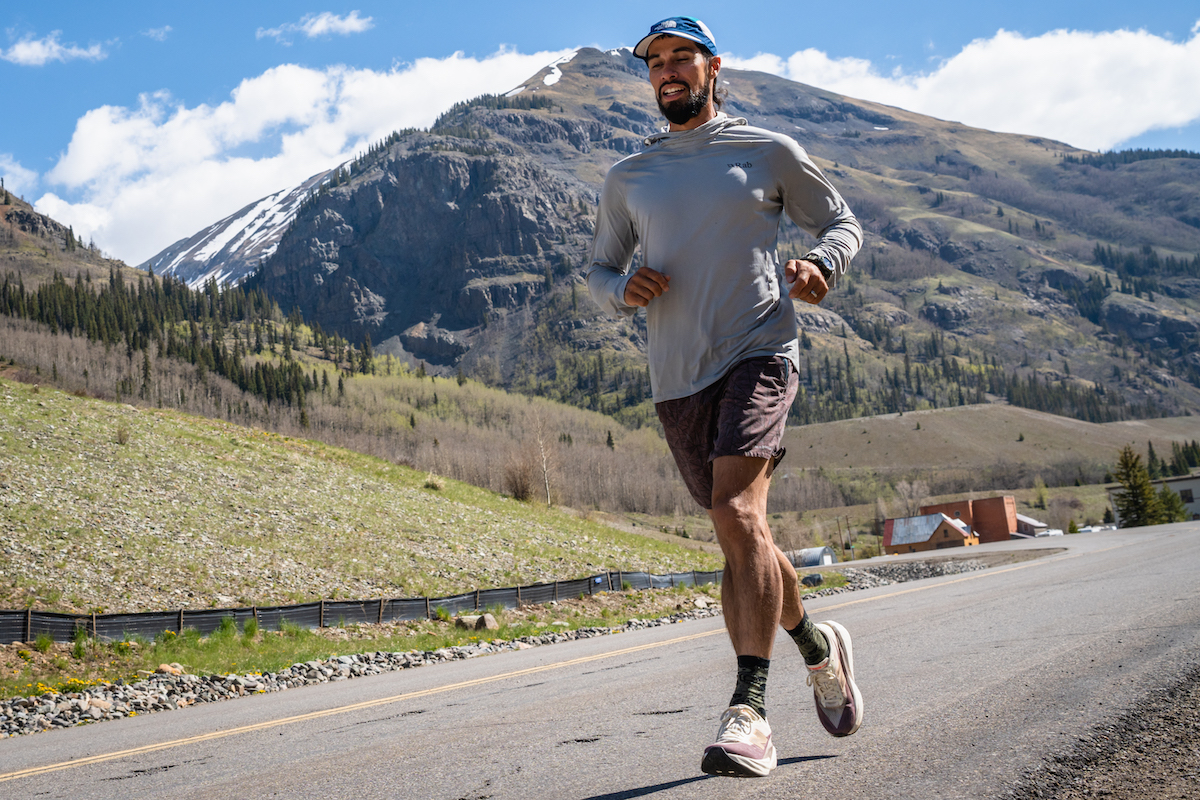
Testing the New Balance FuelCell Rebel v5 near Silverton, Colorado. Photo: iRunFar/Eszter Horanyi
Training Versus Racing Shoes
Technically, you don’t need more than one pair of running shoes at a time. Many great shoe options strike a balance between comfort, performance, cushioning, and durability, and the Saucony Endorphin Speed 5 is our top pick for training for and racing a marathon if you’re only going to have one pair of shoes. Check out our Best Running Shoes guide for more of our favorite all-arounders.
That said, there are also advantages to keeping two or three pairs of running shoes in rotation, such as an everyday trainer like the Nike Pegasus 41, a shoe for workouts and racing, and a trail-specific shoe. It’s like keeping a toolbox for running that allows you to select the best tool for your training goals of the day. A comfortable everyday trainer will help the miles roll by on easy days or recovery runs, but it might feel clunky during a speed workout.
Meanwhile, a super shoe like the Nike Alphafly 3 can help you achieve your personal best in a marathon race, but would not be suitable for everyday running. Finally, trail running shoes like the Nike Ultrafly and Hoka Tection X 3 have specialized rubber and lug patterns on the outsole for gripping dirt, rock, and mud, and they’re generally more durable, which is what you need for off-road running.
Whether you run in one pair of shoes at a time or keep a few pairs in rotation depends on your goals, preferences, and the surfaces you run on.
Why You Should Trust Us
This best marathon running shoes guide was compiled with the expertise and testing experience of the iRunFar team and supplemented by extensive research by author Alli Miles. It also received input from seasoned running shoe experts.
We began by considering a list of nearly three dozen running shoes currently on the market that are ideal for training and racing the marathon distance. We whittled down this list and sent our top picks to our team of testers, who extensively test dozens of running shoes throughout each year.
Our testers ran in the shoes for several weeks, collectively putting in hundreds of miles and providing feedback on fit, feel, stability, cushion, performance, durability, and other factors. Some of our testers took the shoes to the New York City Marathon, while others used them for training for the California International Marathon. After all of this research and testing, we further narrowed our list of the best to the shoes laid out in this guide. We continue to test new shoes on the market and keep this guide updated.
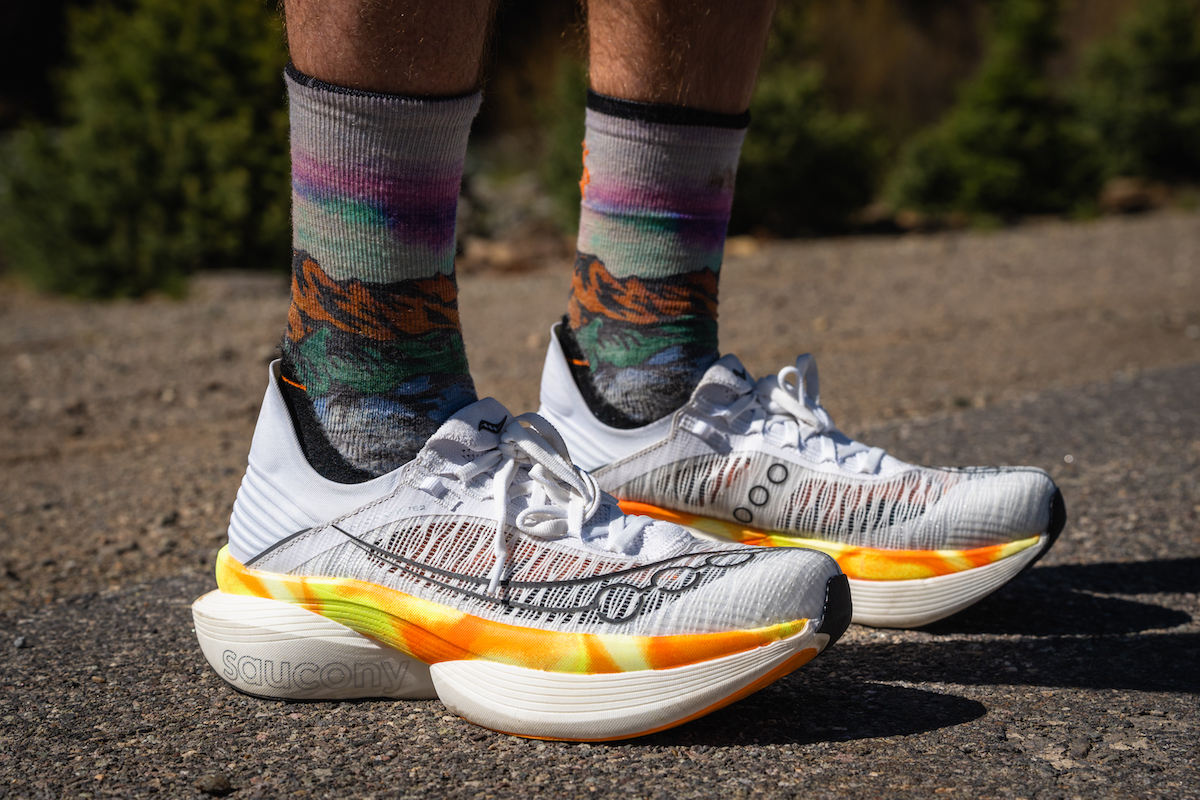
The Saucony Endorphin Elite 2 super shoes are some of the most advanced and aggressive road racing shoes available. Photo: iRunFar/Eszter Horanyi
Frequently Asked Questions About Marathon Shoes
What shoe is best for a marathon?
The best shoe for running a marathon depends on your goals, preferences, experience level, and other factors like gait and history of injury. For new runners and first-time marathoners, a shoe that feels comfortable and boosts your confidence will be a great choice. We recommend the Nike Pegasus 41 for people just getting into the marathon distance. If you have a history of plantar fasciitis or other injury, or you know you overpronate, your best will likely be a stability shoe offering a bit more support.
If you’re a seasoned runner or training for a specific time goal, you might consider a super shoe for race day. Super shoes give runners a performance boost. However, they can change your running gait and don’t work for everyone. Therefore, ensuring you can run in super shoes without getting injured before committing to them for a race is important. If you opt for super shoes, you’ll want to have at least one other pair of traditional running shoes in rotation for everyday easy runs.
The Nike Alphafly 3 super shoe is currently the favorite at iRunFar, though we love the New Balance FuelCell Rebel v5 as a more minimalist, non-plated shoe that will also perform on race day.
What shoes do top marathon runners wear?
In any marathon race, elite runners almost always wear some sort of super shoe. The Nike Alphafly 3 and Nike Vaporfly 3 are two of the most popular shoes in the field at any marathon — among pros and amateurs alike — though elites will wear their sponsor’s shoe, whether that’s Saucony, Brooks, On, Adidas, Asics, New Balance, or something else.

Testing super shoes near Silverton, Colorado. Photo: iRunFar/Eszter Horanyi
What are super shoes?
Unlike traditional shoes, super shoes, like our favorite Nike Alphafly 3, have a carbon plate sandwiched between midsole foam layers. Traditional shoes cushion and absorb impact, while super shoes act like a spring, sending energy back into your legs as you propel forward. The feeling is just that — forward propulsion. The shoes feel bouncy and powerful, and along with their lightweight construction, they have the effect of feeling rocket-ship fast.
Although super shoes can give you an advantage in workouts and races, they also change your natural gait. Additionally, all of the fancy design elements like carbon plates and expensive foams mean that super shoes are very expensive — around $200 to $300 — and aren’t as durable as traditional running shoes. For these reasons, super shoes serve best as race- and workout-specific shoes that runners keep in their rotation. Most people will shy away from using super shoes as a singular, daily training shoe.
Do super shoes really improve performance?
Yes! This has been proven since super shoes first appeared at the 2016 Olympics. For most runners, super shoes like the Nike Alphafly 3 can help them drop their pace by a few seconds per mile, making a big difference throughout a marathon. Nevertheless, the more important question is whether super shoes are the best option for you, and this question may have a complicated answer.
In short, if you already have an efficient gait, super shoes can probably help you achieve that shiny new personal best. On the flip side, if you have instabilities, super shoes could lead to injury. To learn more about super shoes and their function, check out this video from author and running expert Jay Dicharry, MPT, SCS.
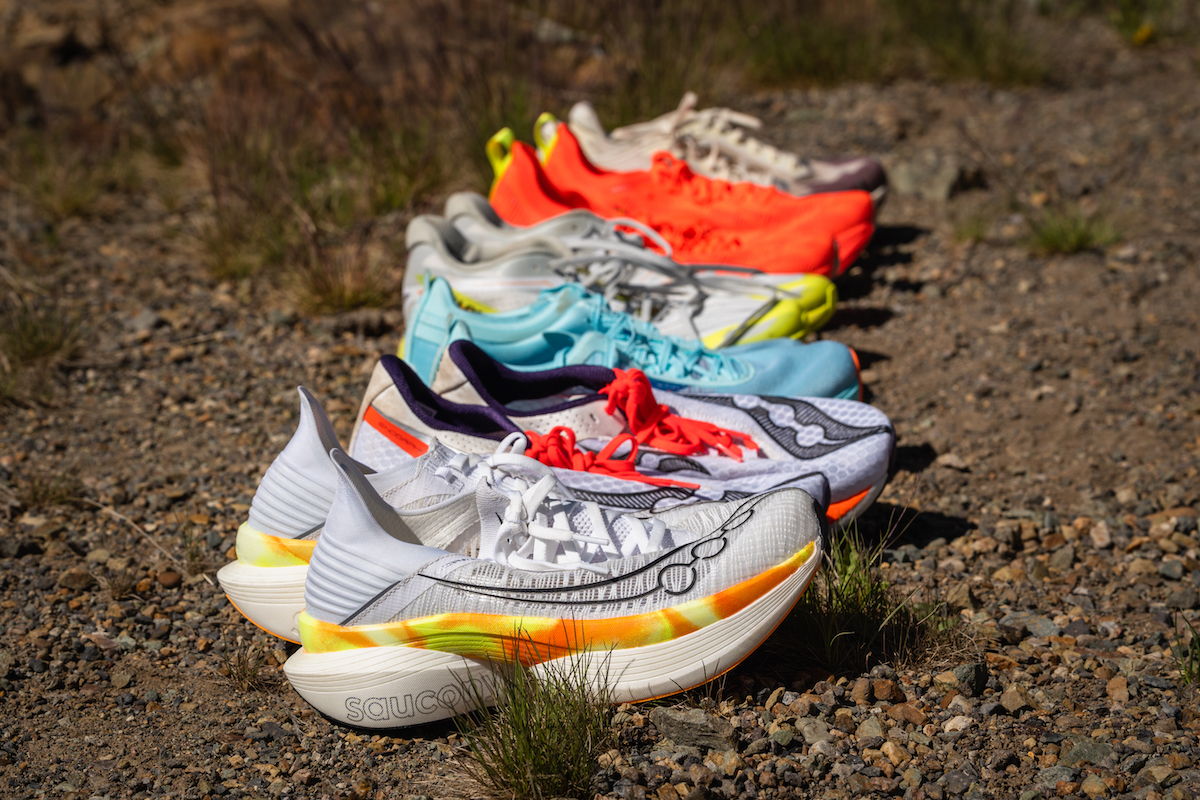
One pair of super shoes and a few pairs of trainers is usually enough for a marathon training cycle. Photo: iRunFar/Eszter Horanyi
How many running shoes do I need?
The number of shoes you keep at any given time depends on personal preference, budget, and space on your shoe rack. On the one hand, you really only need one pair of running shoes, and there are tons of options out there that work well for everyday running, workouts, and races, and some shoes can even hold their own on both roads and trails.
If you opt for one pair of shoes for all your running, the best bet is to pick a style that’s comfortable and has moderate cushioning, decent grip, and proven durability. This guide has several options that will perform well both on race day and for everyday training, including the Saucony Endorphin Speed 5 and the New Balance FuelCell Rebel v5.
At the other end of the spectrum from the people who only have one pair of shoes are the gear testers at iRunFar. Because we run almost every day and love to study, test, and examine the features and technology of each shoe style, many of us end up with too many shoes to count. There are specialized shoes for everything: plush cushioned shoes for everyday easy runs, springy and responsive workout shoes, super shoes for racing, trail shoes, waterproof shoes for snow and mud, and so on.
While trying different kinds of running shoes is fun, it can become an expensive habit. Realistically, most dedicated runners will do well with a few pairs of shoes in rotation at any given time. An excellent place to start is with a pair of everyday training shoes, like the Nike Pegasus 41, that can perform well on roads, gravel, and light dirt, a dedicated pair for workouts and racing, and a pair of trail shoes, like the Hoka Tection X 3, that can stand up to more rugged terrain.
How do I know when my running shoes are worn out?
The easiest way to know when to replace your shoes is to track the mileage you put on them. This is easy to do if you record your runs on an app like Strava, which also lets you add your shoes and automatically record the mileage you put on the shoes. Most traditional shoes will last anywhere from 300 to 500 miles, while a super shoe like the Nike Alphafly 3 will probably wear out around 200 miles.
Knowing this, you can start periodically examining the wear and tear on your shoes as you approach this range. Keep an eye out for outsole tread that’s beginning to look worn smooth, tears or holes in the shoe’s upper, and a packed-out or generally less supportive feeling from the midsole.
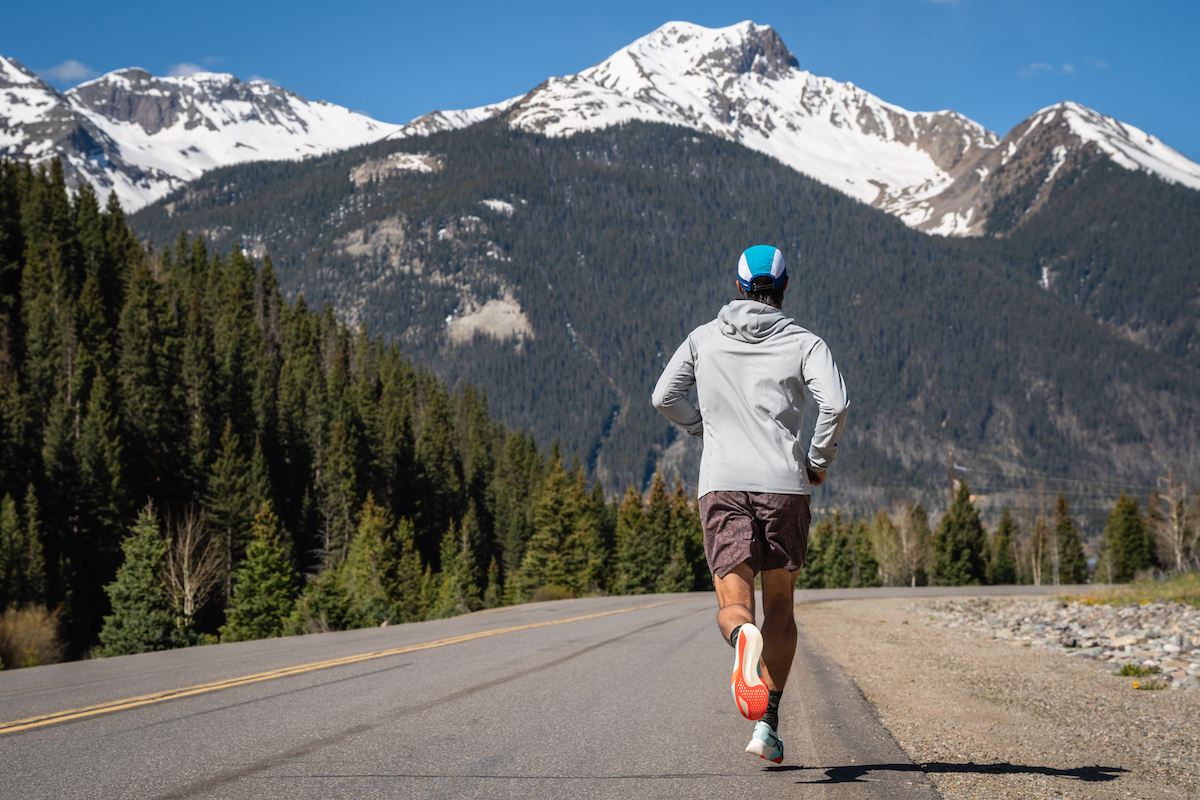
Logging road miles near Silverton, Colorado. Photo: iRunFar/Eszter Horanyi
How long before my marathon race should I get new shoes?
This is a little bit of an “it depends” answer. First, and most importantly, don’t get brand-new shoes immediately before your race. If you’re simply replacing a style you’ve been running in with a fresh pair for race day, you only need to give yourself enough time to break in the new shoe. Assuming it’s one you’re familiar with, you likely know how long it takes you to break in a new pair, and it could be as short as a week or two before your race.
On the other hand, if you’re switching shoe brands or models, you’ll want to give yourself at least a few weeks to run in your new shoes through easy runs, workouts, and long runs to make sure they continue to provide an excellent fit and sufficient comfort as you break them in.
Some shoes can feel good at first and cause issues later, so you need to give yourself enough time to get through the break-in period. It’s worth noting that super shoes like the Nike Alphafly 3 will wear out more quickly than traditional shoes, so you don’t want to do too much in them before race day.
A final consideration is monitoring the shoes you’ve been wearing through your training block to ensure they don’t wear out right as your race day approaches. If you’ve been wearing the same pair of shoes for several weeks or months while training, estimate the number of miles you’ll put on those shoes before your race and plan when to purchase a fresh pair if needed.
What are the best marathon shoes for beginners?
The best marathon shoes for beginners are ones that feel comfortable and fast. This is probably a moderately cushioned, lightweight shoe that’s bouncy yet stable and fits your foot well. While some beginners or first-time marathon runners may have a time goal, the best way to set yourself up for success is to wear comfortable shoes that give you confidence. Because of their comfort and versatility, we recommend the Nike Pegasus 41 as a great shoe for beginner marathoners. The Saucony Endorphin Pro 4 has a less aggressive rocker than other super shoes and is more accessible to newer marathoners while still having much of the technology of higher-end shoes.
A shoe like the Saucony Endorphin Speed 5 also provides a reasonable amount of cushion, has good durability, and is quite comfortable, making it an excellent option for many beginner runners. When you’re running your first marathon, you want to be able to soak up the energy and take in the full experience, and this is difficult to do if you’re experiencing hot spots or pain in your feet!
What are the best marathon shoes for slow runners?
There are tons of running shoes that can work well for “slow” runners. While super shoes are not out of the question for slower runners, they may not be worth the investment if you’re not racing toward a specific time goal or a qualifying standard. Instead, comfort may be more important.
Shoes like the New Balance FuelCell Rebel v5 could be worth considering since they are comfortable and lightweight shoes that perform well at the marathon distance. Additionally, a nylon-plated shoe like the Saucony Endorphin Speed 5 could be a good option since it provides a good balance of responsiveness and comfort.
You may find the right match for your needs in our Best Road Running Shoes guide. Many of the shoes in that guide will work well for everyday and marathon running.
Call for Comments
- Do you train for and race marathons? What’s your go-to shoe?
- Have you run in super shoes? Have they impacted your running performance?
Related Articles
Best Running Shoes of 2024
Best Cushioned Running Shoes of 2024
Training for Beginner Runners
Mental Aspects of Running

Marathon training can be a grind. It’s always a good idea to have a training buddy for pep talks and shoulder massages. Photo: iRunFar/Eszter Horanyi
